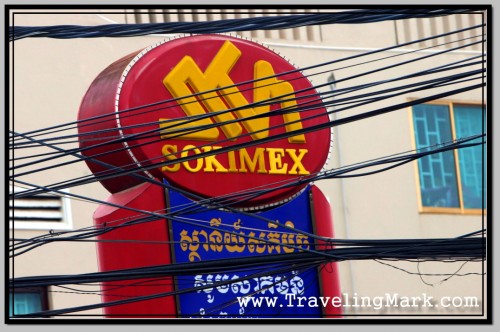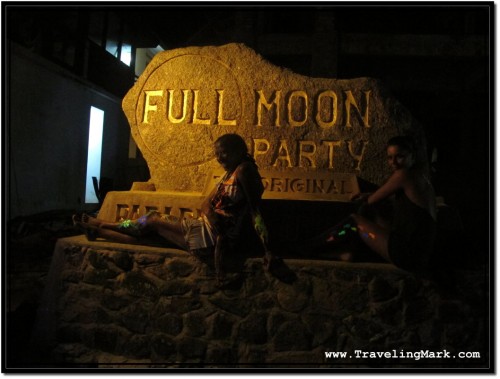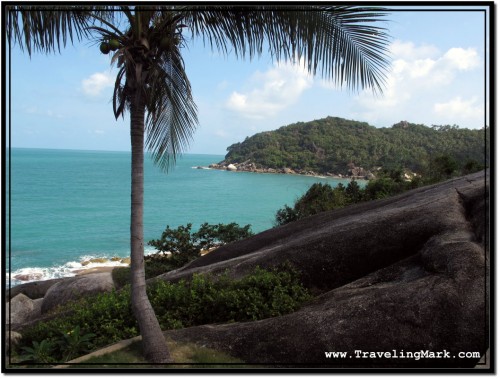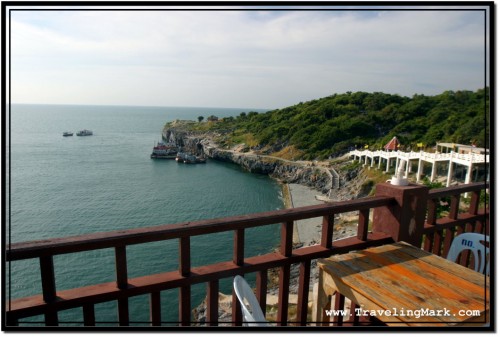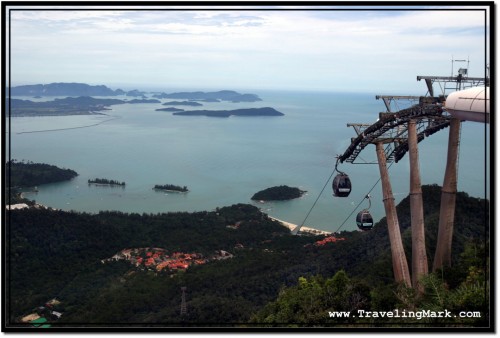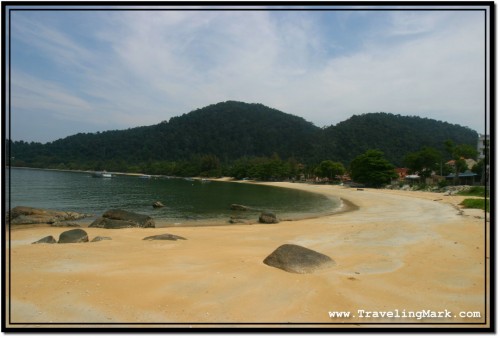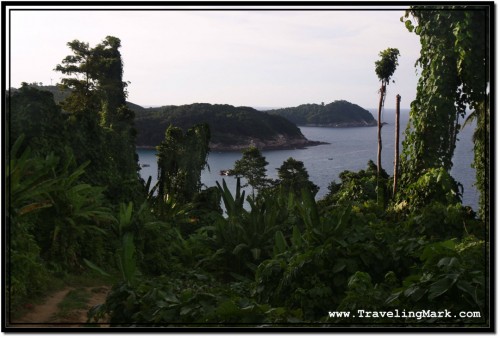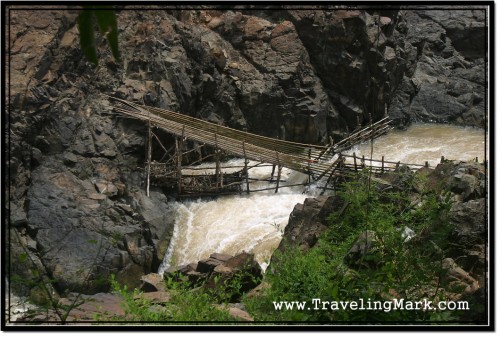My first Christmas and New Year holiday seasons were spent traveling through Thailand. It taught me a bitter lesson about how challenging this time of the year can get for budget travelers. Armed with this experience, I decided to get ahead of myself as soon as the following year’s holiday season got within a month, securing myself with reasonably priced accommodation early on and staying put until the madness was over and done with before resuming traveling.
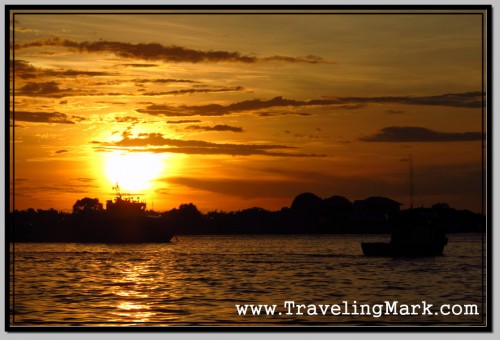
Thanks to Malaysia’s welcoming visa policy which enables most foreigners to stay in the country for up to 3 months visa free, I timed my visit to Borneo part of the country to span over the Christmas and New Year. Having gotten to Sabah – the easternmost Malaysian state – in mid November, I knew I could stay until mid February which was more than enough to carry me through the most expensive time of year for travelers. Well ahead of Christmas knocking on everyone’s door, I settled in the heart of Kota Kinabalu to wait out the holidays.
I established a pretty solid daily routine which both kept boredom away and provided healthy lifestyle choices. I had Kota Kinabalu figured out very quickly and knew where the best and cheapest places were to buy coconut – which I drank daily, fresh fruit – especially papaya, and freshly caught salt water fish grilled on a slow fire which I would eat with a double portion of bitter melon. The time I had left I wisely used on enhancing the scalability of my web based income.
Everything was fine and dandy on my end. I minded my own business and remained perfectly content ignoring and being ignored. If I was not buried with my head in my laptop, I was pacing my way to the Philippine Market to buy my fish for supper. Work was getting done and as Christmas kept drawing nearer, I felt peculiar sense of satisfaction knowing that I’ve beaten the rush and over-the-top rip-off pricing for accommodation travelers who were just coming in ended up faced with.
A Canadian Woman in Borneo
Then at devil’s bidding, I had my daily minding-my-own-damn-business routine disturbed by a fine young woman who expressed unusual interest in having a conversation with me. Having just gotten to Kota Kinabalu, she was looking for an advice on where to go and what to do and I just must have had it written all over my forehead that out of all people around, I would be the one to actually have all the answers she was looking for. It did happen to be the case, but how she picked me out is anyone’s guess.
Reluctant to get more involved, I eagerly answered all of her immediate question and passionately filled her in on the ins and outs of the goings in Kota Kinabalu as far as foreigners are involved, believing that after she’s learned all that, she’d leave me cut the world around me off once more and bury my face back in the computer screen to carry on with my duties.
But then she asked where I was from. Since she was from Canada too and just escaped brutal winter Canadian prairies experience this time of year, we just had another endless topic to talk about. Before I knew it, my laptop was shut off and we were headed out so I could show her around. At this time I thought to myself – nothing wrong with getting a bit of a break from my daily routine and engaging in something unplanned and spontaneous even if I end up having to make up for the time lost.
She was an attractive girl which made the time spent together so much more enjoyable but that was not the sole reason why I took a break from myself and went to be her guide. I did get to appreciate extra intake of fresh air and frequent interesting topics that kept popping up. There was never a dull moment with her and I believe we both learned a lot from each other. But as it goes, there just had to be one thing that kept adding spoilage to the overall experience.
The Disconnected Facebooker
While I was submerged in the environment, taking notices of the sounds and smells and movement of things and people around me, she kept checking her phone and constantly debating with herself whether what she’s seeing was worthy of a photograph she could post on Facebook. There were errands she needed to run, but at the end of the day, they were really just side-track excuses to put her in places and situation she could take pictures of to post on Facebook for her friends to envy.

She was physically next to me, but her mind was constantly on Facebook. She wanted to check out merchandise in many stores but never to see whether they had anything she could buy, only whether they had anything she could take a picture of to post on Facebook. Both of us being foreigners in Malaysia, staff in every business we walked into had their eyes right on us and eagerly assisted her in trying wacky costume on believing that they would score a sale.
That’s what, at first, I thought she wanted. But after we’ve walked into fourth store in which she would try a costume on only to have me take a picture of her wearing it after which she would check the camera to see whether the pic was suitable for Facebook and then take the costume off and wave the business good bye, I started getting sick and tired of it.
For one, I didn’t appreciate being part of the tease game, but most of all, there was this reality of my companion being vastly disconnected – physically present but mentally on the computer imagining what caption she was going to give that last picture in the costume I just took of her for her friends on Facebook to admire.

Our time spent together was full of unfinished sentences and lost thoughts because she would spot something that caught her attention and wanted to take a picture of it for her Facebook. Staff have always willingly assisted by climbing ladders and getting whatever she pointed at off the shelf because the idea of two foreigners on a shopping spree promised an opportunity of good sales. None of it was happening and I started to feel embarrassed teasing those people like that.
The fact that I was gonna stay in Kota Kinabalu for another month or so didn’t really bother me. Under normal circumstances, I don’t mind making a fool out of myself and be seen by the same people as a fool twice, but this was making me a part of something I would never engage in on my own terms. By the time I realized what life with Facebookers was really like, I was too deep in the commitment to show her around to easily withdraw.
Can’t See The Forest for the Facebook
The extent at which this Facebook user was disconnected from real life became even more apparent and overwhelming after we’ve returned from “taking pictures for Facebook” tour around Kota Kinabalu and she got on the computer to start posting them on Facebook. Utilizing the instant chatting capability available to Facebook members, she kept chatting with her friends and surrogates and felt compelled to pass how they responded to what she was saying about her today’s experiences to me. I could not believe what I was hearing.

When she shared with her friends the experience we’d had buying cakes at the night market, she passed on information that was completely incorrect. We came to that stall but the lady who ran it was on her cell phone. Another local lady who stood on the opposite side of the counter took over from the lady who couldn’t assist us because she was on the phone and explained what flavor these cakes were and how much they cost. We paid for a few slices and as she was packing our cakes up, she threw an extra cake in.
Needless to say, my Facebooker companion spent this whole conversation taking pictures for her Facebook. She also asked the lady to pose with the cake for a picture and when she was debating it with her friends on the messenger, she was all too eager to tell them this awesome story about a lady who stole an extra cake from a seller who was not watching because she was on the phone.
That unfortunately is not what happened. Because my companion was too preoccupied setting up her camera to take pictures she could post on Facebook, she missed when the lady said that she was the seller’s sister and a partner and together they run this and other stalls. She had full authority to decide how much cake was OK to give the customers but my Facebooker companion had her mind on Facebook, plotting captions she was going to add to pictures in her head so facts escaped her attention. Plus being a Facebooker who cares more about attention from fellow Facebooker than anything else, she may not have been interested in the real story because a story of a lady who stole a cake from the seller simply sounded way cooler than a story of a seller throwing an extra cake in.
And that’s how misinformation gets passed among Facebooking sheep.
Unknown Reality
This experience told me everything I needed to know about the travelers who have Facebook. They are so taken aback by being on Facebook, they entirely submit their traveling experience to it. They don’t travel – they leave home to take pictures for Facebook. They live for Facebook and surrender everything traveling delivers to the goal of boasting before their Facebook surrogates. Their mind is never in the moment – it’s on Facebook. They have no memory of sounds and smells and random flashes of movement because they constantly think of their next status update and crave attention from other members.

Facebookers use Facebook to present themselves as those perfect people with amazing experiences and life that turned out to be downright poetic. My encounter with this Canadian girl was not my first, nor my last with a traveller with a Facebook account and they were all like this. There is clearly something about Facebook that bleaching the brains of people right out. I’ve never been prouder of not being a member of a flock of sheep who are this disconnected from reality.


